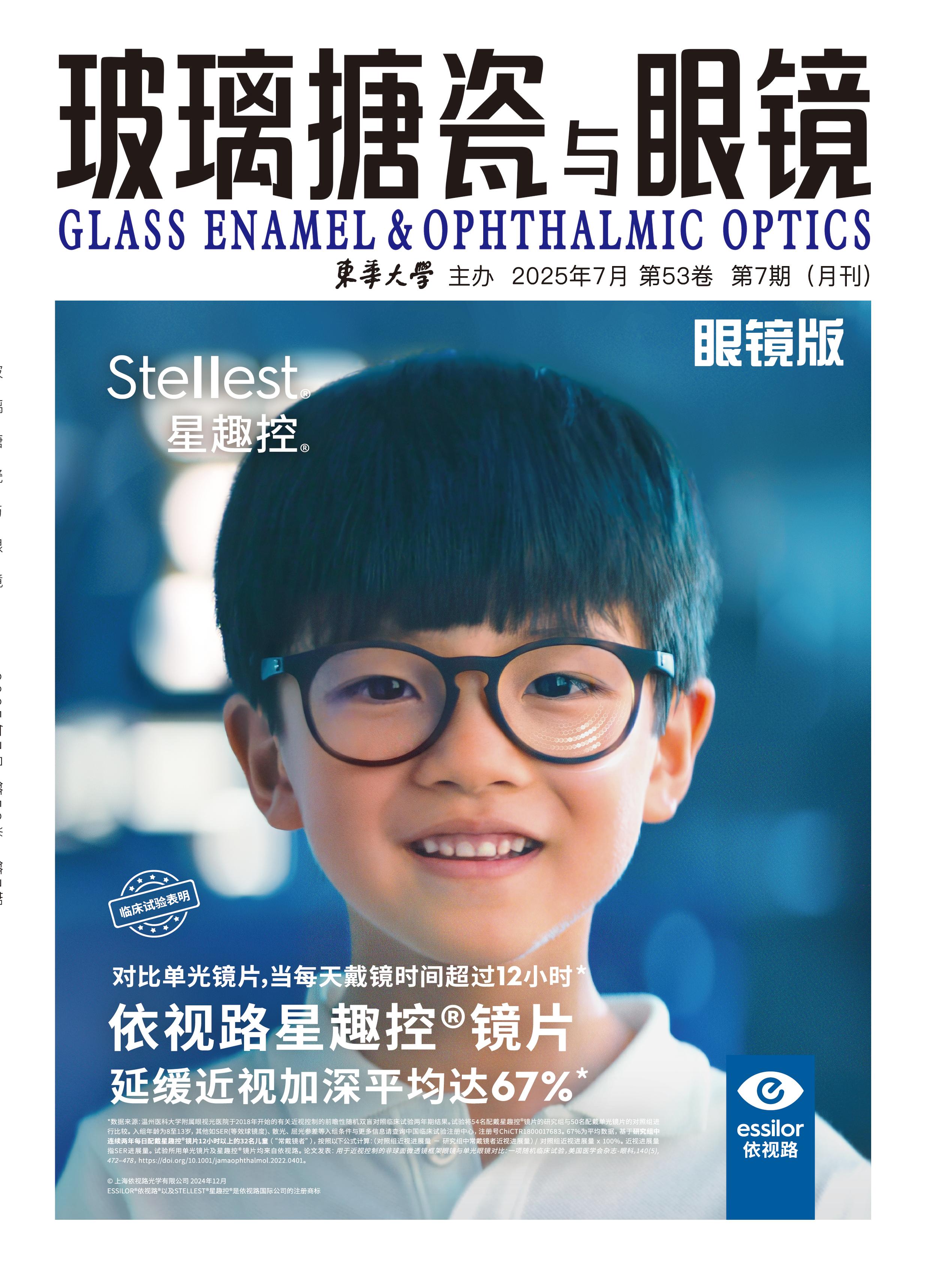
By investigating the near interpupillary distance of adults and the parameters of near-vision spectacles on the market, according to the tolerance error range of the national standard, the relationship between the near-vision spectacles and the near interpupillary distance error can be obtained. The results show that the average value of the nominal optical center horizontal distance of near-vision spectacles is about 62 mm. These results match the actual near interpupillary distanceof the male wearer. However, it cannot match the interpupillary distance of women or consumers who require high vertex power for presbyopia. It is recommended that the manufacturer should design the optical center horizontal distance of the near-vision spectacles with reference to the average value of the near interpupillary distance.
20 spectacle frames and sunglasses were chosen randomly. Distance between the sides were measured at different test time (immediately, after 30 min, after 60 min and after 120 min), then permanent deformation values were calculated. Analysis of variance method was applied to compare the permanent deformation values rising from different test time. Results that the permanent deformation values were independent of different test time when the values were not more than 5 mm were obtained.
This paper studies the whole life cycle inspection system to ensure the quality and safety of prescription assembled spectacles, and the fast and efficient inspection method suitable for prescription assembled spectacles. The technical requirements of prescription assembled spectacles are reasonably allocated to each link of the daily operation of the fitting enterprises, and the quality control is carried out respectively, so as to form a quality testing system that collaborates, circulates and runs through the whole life cycle of prescription assembled spectacles. Based on the national standard method, using qualitative analysis, combined with the requirements of fast and high accuracy, this study puts forward a "QRA" rapid test method suitable for fitting enterprises. In this study, the standard method and QRA method were used to detect the quality of 5 main technical indexes of 10 pairs of prescription assembled spectacles. It was found that the results of the two methods were consistent and the QRA method was efficient. The whole life cycle inspection and QRA rapid inspection method for customized glasses are feasible and reliable, which can improve the product qualification rate of inspection enterprises, improve work efficiency and ensure product quality and safety.
The purpose of this study was to quantify the effectiveness of low-lever red laser (LLRDL) in slowing the progression of myopia axial length elongation. Myopic children aged 8 to 12 years were enrolled in a year (with follow-ups at 3 month and 6 month), single-masked, randomized clinical trial. Subjects in each group were randomized to either a LLRDL (test) group or single vision spectacles (control) group. This study was to assess the changing values from 3 and 6 month follow-ups from the baseline, especially the axial length. After 3 months and 6 months, 82.5% and 72.7% of myopic eyes of the subjects enrolled had no axial elongation compared with baseline, while the control group had 100% axial elongation, and there were significant differences between red light treatment group and control group (p<0.000 1). LLRDL had significant efficacy in control axial elongation. But there were no significant difference between chamber depth, cornea power or choroidal thickness.
Based on the current situation of education and talents of optometry related majors in Jinling institute of technology, through the analysis of the current situation of optometry open educational resources and learning difficulties, combined with the basic theories of deep learning and research-based learning, a five step project or problem base learning(P&PBL) guided deep learning method was constructed, to explore a practical way and method of research-based learning of optometry based on deep learning and opened education resources. This method is conducive to enhance students' learning experience, improve learning efficiency, and improve their ability of holistic thinking, critical thinking and divergent thinking.
To understand parents’ demand for children’s eye care knowledge during home online classes and to provide basis for targeted health education, the questionnaire of eye care knowledge needs during children’s online course study was conducted among 184 parents of children who visited the ophthalmology department of Children’s Hospital of Fudan University during May 2020. Results showed that 92.0% of the parents wanted to acquire the knowledge of eye care during online lessons, and 73 (39.7%) of the children studied online lessons every day.64 cases (34.8%) had access to video except online course learning. There were 27 cases (14.7%) of online learning time for each online lesson. The daily rest and sleep time of 20 patients (10.9%) were mainly required for eye time control during online lessons, time and methods of rest during home online lessons, etc. Parents have access to health education mainly through the Internet and hospitals.









